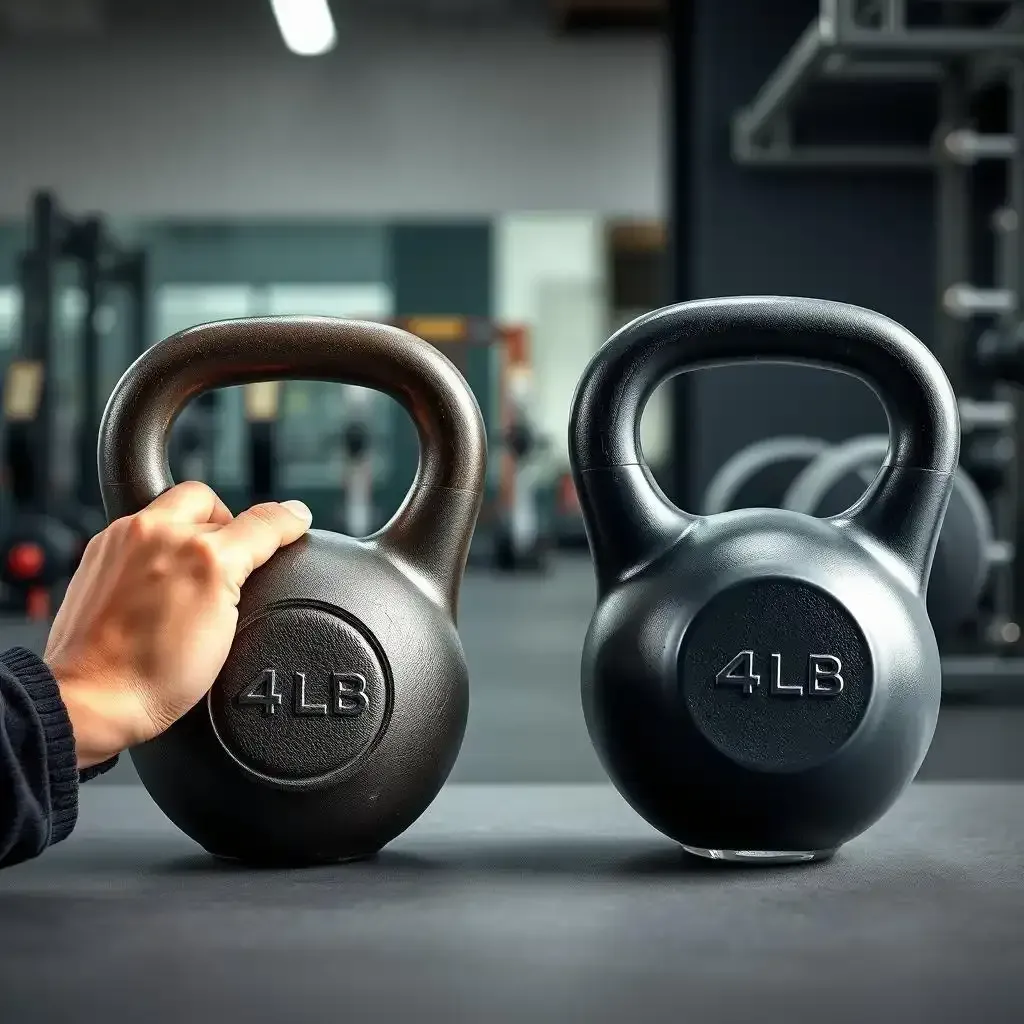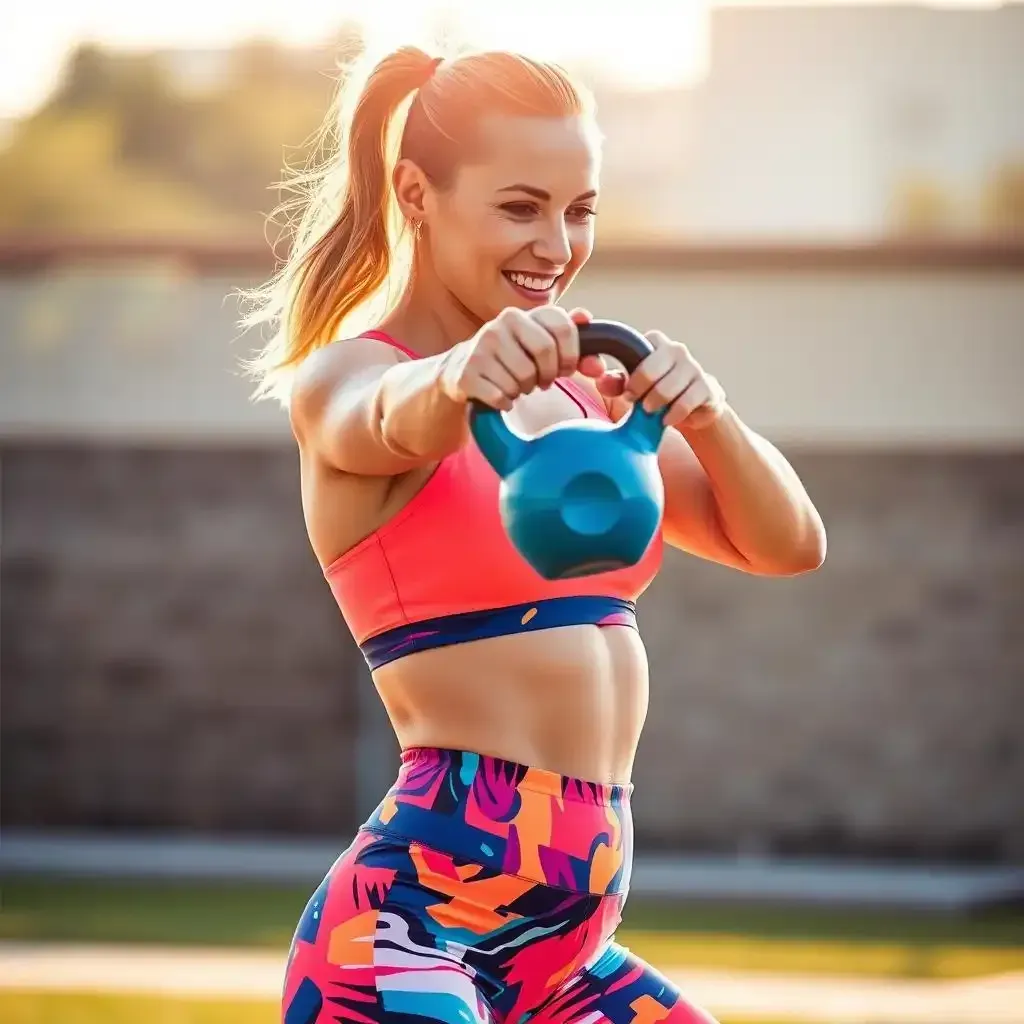Table of Contents
So, you're thinking about adding a 4 lb kettlebell to your fitness trip? That's fantastic! Kettlebells are a seriously versatile piece of equipment, perfect for building strength, improving cardiovascular health, and boosting overall fitness. But with so many options available, choosing the right 4 lb kettlebell can feel a bit overwhelming. This guide, created by the experts at kettlebellworkout.homes, will walk you through everything you need to know. We'll explore the different types of 4 lb kettlebells, discuss essential exercises to get you started, and provide you with some beginner-friendly workout routines. Whether you're a complete beginner or just looking to add a new dimension to your fitness regime, a 4 lb kettlebell is a fantastic investment. Get ready to let loose your inner strength and find the joy of kettlebell training!
Choosing the Right 4 lb Kettlebell: A Buyer's Guide

Choosing The Right 4 Lb Kettlebell A Buyers Guide
Material Matters: Finding Your Perfect Kettlebell
Picking the right 4 lb kettlebell feels like choosing the perfect sidekick for your fitness trip. I've tried a few, and trust me, the material makes a HUGE difference. Cast iron kettlebells are the workhorses – durable, reliable, and they’ll last you for years. Think of them as the trusty steed in your fitness stable, ready for any challenge. They're usually cheaper too which is a bonus. However, they can be a bit clunky, and if you drop one on your foot, well… let's just say you'll remember it. Then there are vinyl-coated kettlebells; these are softer on the floor and quieter during those late-night workouts (my neighbors thank me!). They're easier on your hands too, which is nice. The downside? They might not be as durable in the long run, and they tend to be a bit pricier.
Kettlebell Type | Pros | Cons |
|---|---|---|
Cast Iron | Durable, affordable, classic | Heavy, can be noisy, might damage floors |
Vinyl-Coated | Quiet, gentle on floors and hands | Less durable, more expensive |
Size and Shape: It's Not Just About the Weight
A 4 lb kettlebell might seem small, but even a small difference in size and shape can impact your workout. Some kettlebells have a wider base, offering more stability during certain exercises. Others have a more narrow profile, making them better suited for swings and snatches. Think of it like this: a wider base is like having a sturdy tripod for your camera—it's stable. A narrower one is more like a monopod – lightweight and agile but requires more skill. I've found that a slightly smaller kettlebell can be easier to maneuver, especially when you're starting out. Don't be afraid to try different ones out if you can, just to see which one feels best in your hands.
- Consider the handle's diameter – a comfortable grip is key!
- Check the overall balance – a well-balanced kettlebell feels natural in your hand.
- Look for a smooth, non-abrasive surface to prevent blisters.
Handle with Care: The Importance of a Good Grip
The kettlebell's handle is your relationship to the workout. You'll be gripping it, swinging it, and lifting it, so comfort is paramount. A handle that's too thick or too thin can make exercises uncomfortable or even dangerous. A good handle should feel secure in your hand, without being so tight that it cuts off circulation. I like a handle that's textured, but not excessively rough. Think of it like choosing the right pair of running shoes – the wrong ones can cause blisters and pain! If you're unsure, head to a store and try out different kettlebells before you buy. That way you can get a feel for what feels right for you.
"The best kettlebell is the one that fits your hand and your workout style." - Kettlebell Guru (Name withheld to protect the innocent)
Mastering Basic Exercises with Your 4 lb Kettlebell

Mastering Basic Exercises With Your 4 Lb Kettlebell
Kettlebell Swings: Finding Your Rhythm
Okay, let's talk kettlebell swings. These aren't your grandma's arm curls; they're a full-body workout disguised as a simple move. Imagine a pendulum, smooth and powerful. That's what your swing should feel like. You start with your feet shoulder-width apart, holding the 4 lb kettlebell between your legs. Then, hinge at your hips, keeping your back straight (like a proud giraffe!), and swing that kettlebell up to chest height. The capability comes from your hips, not your arms – it's all about that hip drive. It took me a while to get the hang of it, but once I did, it felt amazing. It's like learning to ride a bike – a little wobbly at first, but soon you'll be flying! Remember, keep those abs tight – it's like wearing an invisible corset, supporting your back and improving your form.
- Start slow and focus on your form.
- Keep your back straight and your core engaged.
- Let your hips capability the swing, not your arms.
Goblet Squats: A Royal Workout
Next up: goblet squats. Hold your 4 lb kettlebell close to your chest, like you're holding a precious goblet (or a very small pumpkin). Now, squat down as if you're sitting in an invisible chair, keeping your back straight and your chest up. It's like a throne for your glutes – they'll thank you for it! Goblet squats are fantastic for building leg strength and improving balance. They're also a great way to work on your posture. If you're a total beginner, you can do these with just your bodyweight first, and then gradually add the kettlebell. I remember the first time I did goblet squats, I felt a little shaky, but with practice, I got stronger and more confident. It's like building a castle – one brick at a time!
Exercise | Muscle Groups Worked | Tips |
|---|---|---|
Kettlebell Swings | Hips, glutes, hamstrings, back, shoulders | Focus on hip hinge, maintain a straight back |
Goblet Squats | Quads, glutes, hamstrings, core | Keep your chest up, back straight, and descend slowly |
4 lb Kettlebell Workouts for Beginners
Your First Kettlebell Workout: Baby Steps to Big Gains
Okay, newbie, let's ditch the intimidation factor and get you moving! Your 4 lb kettlebell isn't going to magically transform you into a superhero overnight. Think of it as a friendly guide, helping you build a strong foundation. We're focusing on proper form, not crazy reps. Your first workout? Simple. Start with 10 goblet squats (hold that kettlebell close to your chest, like you’re guarding a treasure). Next, do 10 kettlebell swings (imagine you're gently tossing a pancake – but with more capability!). Finally, do 10 rows per side (imagine you're pulling a rope). Rest for a minute, repeat the whole thing twice, and pat yourself on the back. You did it! This is about building consistency, not crushing yourself on day one. Remember, slow and steady wins the race.
- Goblet Squats: 10 reps
- Kettlebell Swings: 10 reps
- Kettlebell Rows (per side): 10 reps
Level Up: Adding Variety and Intensity
Once you've mastered those basics, it's time to spice things up! We can add some new moves to the mix. Try some kettlebell presses (think of gently pushing the kettlebell above your head, like you’re reaching for a star). You can also incorporate some lunges (imagine taking a big step forward like a majestic stride). Increase the number of reps gradually. Don’t rush things! It’s like learning a new dance routine; start slow, master the steps, and then gradually increase the speed and complexity. Listen to your body; if something hurts, stop. Remember, consistency is key. This isn't a sprint, it's a marathon. You'll be surprised at how much stronger you get, even with this little 4lb kettlebell.
Exercise | Reps | Sets |
|---|---|---|
Goblet Squats | 12-15 | 3 |
Kettlebell Swings | 15-20 | 3 |
Kettlebell Rows (per side) | 12-15 | 3 |
Kettlebell Presses | 8-12 | 3 |
Lunges (per leg) | 10-12 | 3 |
Listen to Your Body: Rest and Recovery
This is the most crucial part, and often the most overlooked. Your muscles need time to recover and rebuild. Think of them as little construction workers; they need breaks too! Don't work out every day. Give yourself at least one or two rest days a week. Listen to your body – if you're sore, take an extra rest day. It’s like giving your phone a break from constant use. Also, remember to stay hydrated. Drink plenty of water throughout the day. Proper rest and hydration is like giving your body the best building materials for muscle growth and recovery. Don't push yourself too hard, especially when you're starting out. Progress takes time and patience.
"The most important workout is the one you actually do." - Anonymous Fitness Guru
Final Thought
Investing in a 4 lb kettlebell is a step towards a healthier, stronger you. Remember to start slow, focus on proper form, and listen to your body. With consistency and the right approach, you’ll be amazed at the progress you make. Keep exploring different exercises and routines to keep your workouts engaging and challenging. Happy training!